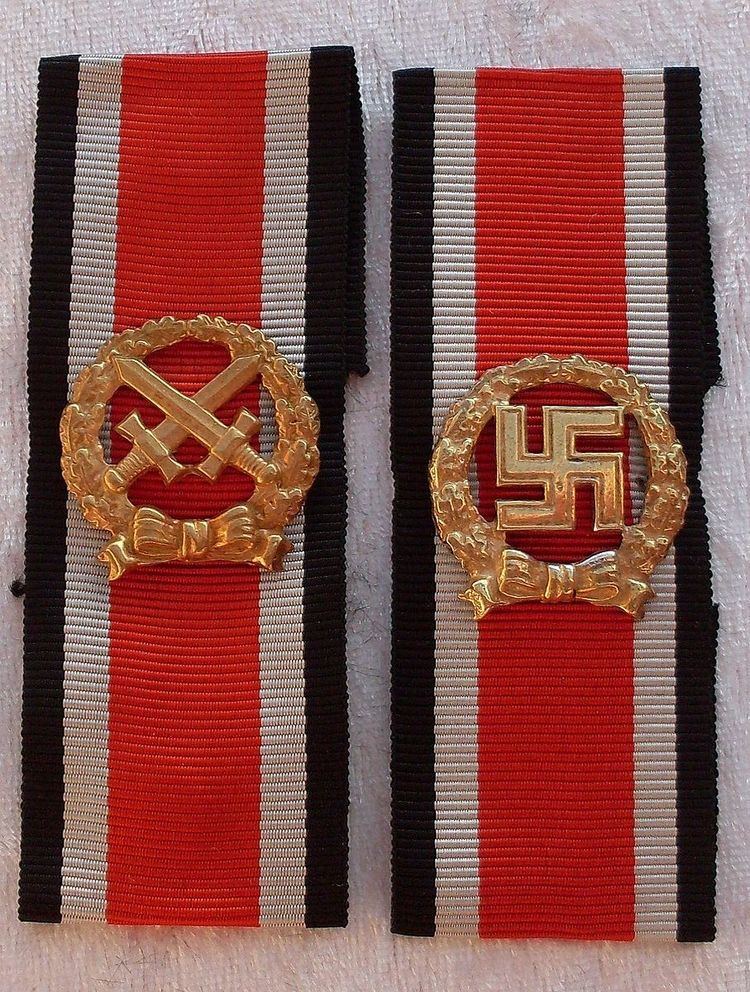Type Military decoration Established 30 January 1944 | Status Discontinued in 1945 | |
 | ||
Awarded for Awarded by discretion of German High Command | ||
The Honour Roll Clasp of the Army (German: Ehrenblatt des Heeres) was a decoration of Nazi Germany during World War II. A total number of 4,556 were awarded to members of the army and Waffen-SS.
The Honour Roll Clasp of the army was instituted after the German invasion of the Soviet Union in 1941. Until 30 January 1944, it was only a paper award. After this date, Adolf Hitler introduced the metallic version of the award for the decoration. There were a number of possible qualifications for the Honour Roll Clasp of the Army:
There were no specific qualifications to earn this award other than what is mentioned above; its bestowing was at the discretion of the German High Command. It was awarded sparingly to retain a high level of prestige and honor. The Waffen-SS was not legally part of the German Army, but were nevertheless eligible on the same conditions as the army.
The decoration contained a wreath measuring 24.5 mm across, formed of six bunches of Oak Leaves on each side. The width of the wreath was 5 mm at the widest point and tapered to the apex where two oak leaves meet tip-to-tip. The height of the badge from base to tip was 26 mm. The swastika was superimposed upon the separately-made wreath and was soldered onto the wreath assembly. The reverse side had four pins for attachment to allow securing to a strip of Iron Cross Second Class ribbon. This ribbon was then looped through the second button hole on the tunic of the recipient.
